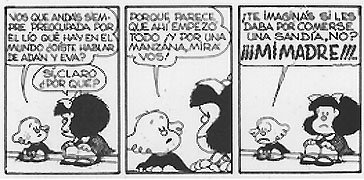Voseo involves the use of an alternate pronoun and conjugation of the second person singular form in some Spanish dialects. The majority of Spanish speakers use tú as the more intimate/familiar form of address; however, in countries where voseo is employed, the word “vos” is used alongside of or as a replacement for tú.
While the use of vos is perhaps most closely associated with Paraguayan Spanish and the Rioplatense dialect of Argentina and Uruguay, voseo is also widespread in some parts of Central America, particularly Costa Rica and Nicaragua. To a lesser extent, Spanish speakers in Bolivia, Chile, Honduras, Guatemala and El Salvador employ voseo. Pockets of voseo can also be found in other regions within Latin America, including parts of Colombia, Venezuela and Ecuador.
In addition to the use of the pronoun “vos,” voseo includes a special conjugation of verbs in the present indicative and affirmative imperative tenses, and in most countries, the subjunctive mode (with the Río de la Plata area being the major exception). Conjugations vary widely depending on the region. For example, in Argentina, the standard tú puedes in the present indicative tense becomes vos podés; however, in Chile the same verb is conjugated as podís and in Venezuela, podéis.
In Argentina, Uruguay and Paraguay, the use of the pronoun “vos” and its accompanying conjugations has almost completely supplanted tú in both spoken and written language. Voseo is considered the norm at all levels of society and can be observed on TV and radio, in literature and music. In contrast, Chileans restrict the use of voseo to informal situations, and even then, the pronoun “vos” is frowned upon. In other words, the voseo conjugation is utilized but paired with the pronoun “tú” (e.g. tú podís). When Chilean speakers use the pronoun “vos,” it’s generally considered offensive.
Spanish speakers who utilize voseo also replace the independent pronoun “ti” with vos. For example, “creo en ti” becomes “creo en vos.” However, the direct and indirect object form “te” stays the same (e.g. tú te pones/vos te ponés). The possessive pronouns used with the tú form also correspond to vos: tu(s), tuyo(s), tuya(s). Lastly, the prepositional pronoun “contigo” changes to “con vos.”




